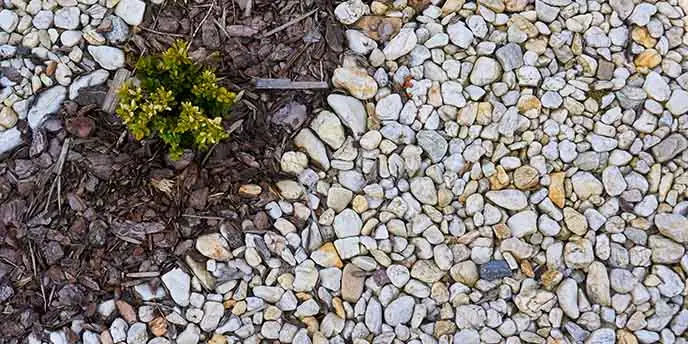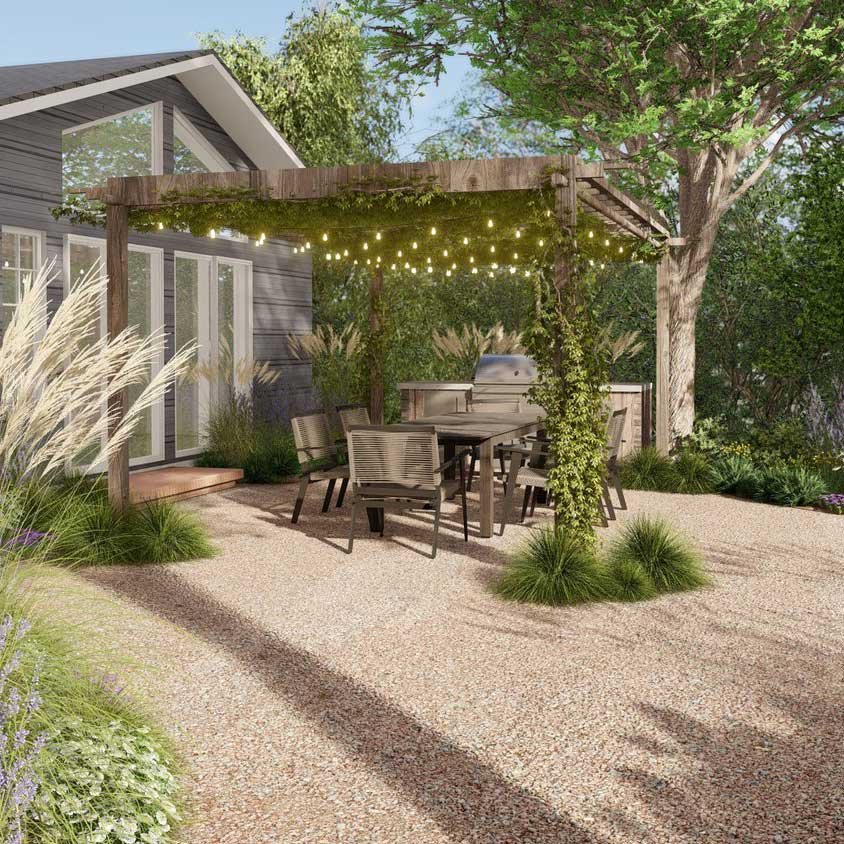White rocks for landscaping may not be the first thing that comes to mind when you think of landscaping, but they can actually add a stunning touch to any outdoor space. Whether you’re looking to spruce up your backyard or create a serene garden oasis, white rocks are a versatile option that can enhance the aesthetic appeal of your landscaping. In this article, we’ll explore the many uses and benefits of using white rocks in your landscaping, as well as some tips for incorporating them into your design.
1. Types of White Rocks for Landscaping

1.1 Natural White Rocks
Natural white rocks are typically found in quarries or riverbeds and vary in size, shape, and texture. They can range from small pebbles to large boulders, making them suitable for a variety of landscaping projects. These rocks are often preferred for their organic look and feel, and can add a rustic charm to your outdoor space.
1.2 Polished White Rocks
Polished white rocks are man-made and undergo a tumbling process to achieve a smooth and shiny finish. They are usually uniform in size and shape, which makes them easier to work with. These rocks are great for adding a contemporary touch to your landscaping and can be used for decorative purposes such as creating pathways, borders, or accents.
1.3 Crushed White Rocks
Crushed white rocks are made by crushing larger rocks into smaller pieces. They are commonly used for driveways, walkways, and as a base for other landscaping materials. These rocks are perfect for creating a clean and minimalist look, and can also help with drainage and erosion control.
2. Uses of White Rocks in Landscaping

2.1 Ground Cover
One of the most popular uses of white rocks in landscaping is as a ground cover. They can be spread over large areas to create a uniform and low-maintenance landscape. This is ideal for areas where grass may not grow well, such as in shady or dry spots. Additionally, white rocks can help suppress weed growth and retain moisture in the soil.
2.2 Pathways and Borders
White rocks can also be used to create pathways and borders in your landscaping. The natural or polished rocks can be arranged in a variety of patterns to add visual interest to your outdoor space. Crushed white rocks, on the other hand, are perfect for creating sturdy and clean walkways that require little maintenance.
2.3 Water Features
If you have a pond, fountain, or any other type of water feature in your yard, white rocks can be used to enhance its beauty. These rocks can be placed around the edges of the water feature to create a natural and serene look. You can also use larger white rocks to create a waterfall or a rock garden near the water feature.
3. Benefits of Using White Rocks in Landscaping

3.1 Versatility
As mentioned earlier, white rocks come in a variety of sizes and types, making them versatile for different landscaping needs. From ground cover to decorative accents, there are endless possibilities when it comes to incorporating white rocks into your design.
3.2 Low Maintenance
One of the biggest advantages of using white rocks in your landscaping is the minimal maintenance they require. Unlike grass or other plants, rocks don’t need to be watered, mowed, or pruned. This makes them a great option for busy homeowners who still want to maintain a beautiful yard.
3.3 Cost-effective
In comparison to other landscaping materials, white rocks are relatively inexpensive. Natural white rocks can often be found for free in nature, while polished and crushed rocks are affordable and readily available at most home improvement stores. This makes them a budget-friendly option for those looking to spruce up their outdoor space without breaking the bank.
4. Tips for Using White Rocks in Landscaping

4.1 Balance with Greenery
While white rocks can add a stunning touch to your landscaping, it’s important to balance it out with some greenery. Too much white can make your yard look stark and unnatural, so be sure to incorporate plants and flowers to add color and texture.
4.2 Layering
Layering white rocks of different sizes and types can create depth and add visual interest to your landscaping. For example, you can use larger boulders as focal points and surround them with smaller pebbles and crushed rocks for a more dynamic look.
4.3 Use Lighting
Adding lighting to your white rock features can bring them to life at night and create a beautiful ambiance in your outdoor space. You can use spotlights to highlight pathways or water features, or string lights to add a cozy feel to your garden.
FAQs about White Rocks for Landscaping
1. How do I choose the right size of white rocks for my landscaping?
It depends on the specific purpose of the rocks. For ground cover, smaller pebbles are usually preferred, while larger boulders are great for creating focal points or water features. Consider the overall scale of your yard and the design you want to achieve when choosing the size of your white rocks.
2. Can white rocks be used for all types of soil?
Yes, white rocks can be used in any type of soil. However, if you have heavy clay soil, it’s recommended to amend it with sand or compost before adding the rocks to improve drainage.

3. How do I prevent weeds from growing through the white rocks?
To prevent weeds from growing through your white rocks, you can lay down a weed barrier before spreading the rocks. You can use landscape fabric, plastic sheeting, or even old newspapers as a barrier.
4. Will white rocks retain heat and affect the temperature of my yard?
White rocks do have the ability to retain heat, but this is usually not significant enough to affect the overall temperature of your yard.
5. Are white rocks suitable for all climates?
Yes, white rocks are suitable for all climates as they are durable and weather-resistant. However, if you live in an area with extreme temperatures, it’s important to choose larger, natural rocks that won’t shift or move easily.
Conclusion: White Rocks – A Simple and Elegant Addition to Your Landscaping

White rocks are a popular choice for landscaping due to their simplicity and elegance. They can add a unique and beautiful touch to any outdoor space, making them a favorite among homeowners and landscape designers alike. In this conclusion, we will discuss the benefits of using white rocks in your landscaping and why they are a practical and cost-effective option.
One of the main advantages of using white rocks in your landscaping is their versatility. They come in various sizes, shapes, and textures, allowing you to create different effects and styles in your yard. Whether you want to create a modern, minimalist look or a more natural and rustic feel, white rocks can be used to achieve both. They can also be combined with other elements such as plants, mulch, or colored rocks to create a unique and personalized design.
Another significant benefit of using white rocks in your landscaping is their low maintenance. Unlike grass or other ground covers, white rocks do not require watering, mowing, or fertilizing. This makes them an ideal choice for busy homeowners who do not have the time or resources to maintain a high-maintenance lawn. Additionally, white rocks do not attract pests or weeds, reducing the need for pesticides and herbicides, making them an environmentally friendly option.
Cost-effectiveness is another factor that makes white rocks a popular choice for landscaping. They are relatively inexpensive compared to other landscaping materials, such as paving stones or wood chips. This makes them an affordable option for homeowners on a budget or those looking to save money on their landscaping projects. Furthermore, since white rocks do not require ongoing maintenance, they can save you money in the long run by reducing water and maintenance costs.
In terms of functionality, white rocks can serve multiple purposes in your landscaping. They can be used as ground cover to prevent erosion and weed growth, as well as to retain moisture in the soil. They can also be used as a decorative element, creating borders, pathways, or accents in your yard. Additionally, white rocks can be used to create a focal point or highlight specific areas of your landscaping, adding visual interest and depth to your outdoor space.
Lastly, white rocks are a durable and long-lasting option for landscaping. They are resistant to weathering, fading, and erosion, making them a reliable choice for outdoor use. With proper installation and maintenance, white rocks can last for many years, providing a beautiful and functional addition to your landscaping.

In conclusion, white rocks are a simple and elegant addition to any landscaping project. Their versatility, low maintenance, cost-effectiveness, functionality, and durability make them a practical choice for homeowners looking to enhance their outdoor space. Whether you want to create a modern, natural, or unique design, white rocks can help you achieve your desired look. So why not consider incorporating white rocks into your landscaping and see the difference they can make in your yard?


